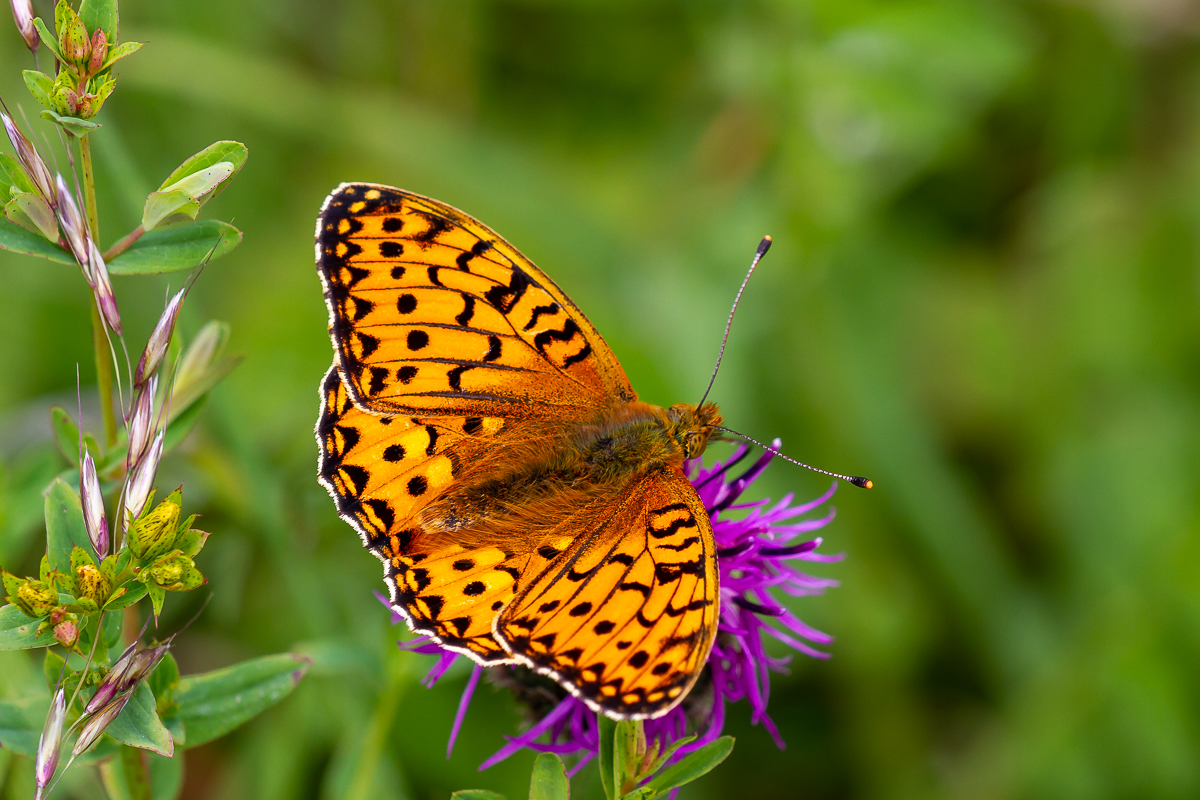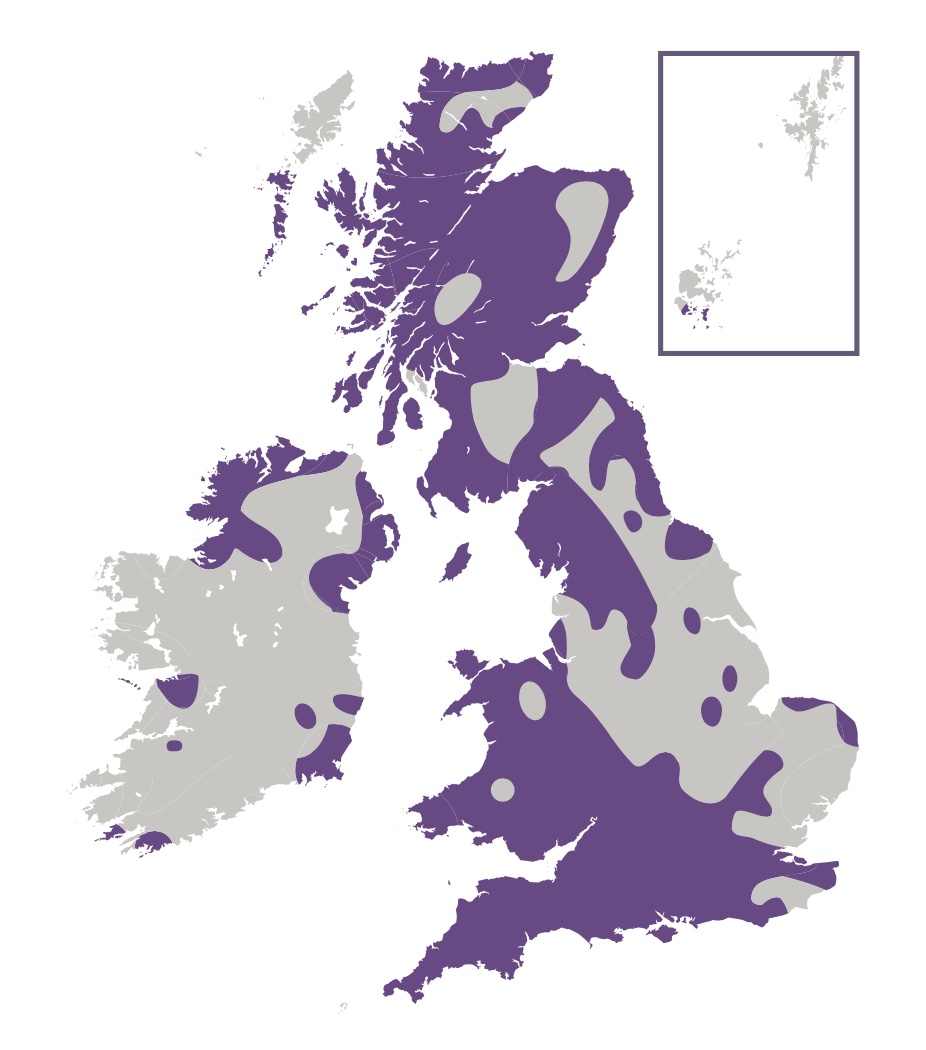
Photo © Peter Eeles
The Dark Green Fritillary is the most widespread fritillary found in the British Isles and is a pleasure to see as it flies powerfully over its grassland habitats, frequently stopping to nectar on Thistles and Knapweed. It gets its name from the green hue found on the underside of the hindwings, which are peppered with large silver spots. This butterfly can be found throughout the British Isles, although it is less common in central and eastern England. Outside of central Scotland and southern England, it is most frequently found in coastal areas and is the only fritillary found in Orkney and the Outer Hebrides. Despite its powerful flight, it is somewhat surprising that this species is not particularly mobile, staying within its breeding grounds.
Both sexes are avid nectar feeders and typically feed in early morning or late afternoon, when they will constantly fly from flower head to flower head staying at each flower for only a few seconds. This behaviour makes them very difficult to observe and it is sometimes easier to find a favourite flower and wait for a butterfly to come to you!
The males are the more conspicuous of the two sexes, and can be seen patrolling over large areas of habitat looking for a virgin female which often rest low down in vegetation. Once found, mating takes place almost immediately. A mating pair may be found resting on vegetation and will even continue to nectar while coupled.
Females are somewhat-easier to see when egg-laying, where they intersperse periods of nectaring with basking and bouts of egg-laying, when they will crawl deep in vegetation, searching out the lushest growths of larval foodplant before laying a single egg, although several eggs are often laid in the same area.

The characteristic habitat of this butterfly is open, windswept calcareous grassland. However, in some areas it can also be found in woodland clearings and coastal dunes.
Adults feed primarily on knapweeds (Centaurea spp.) and thistles (Carduus spp. and Cirsium spp.). brambles (Rubus spp.), Buddleja (Buddleja spp.) and clovers (Trifolium spp.) are also used.
The primary larval foodplants are Common Dog-violet (Viola riviniana), Hairy Violet (Viola hirta) and Marsh Violet (Viola palustris).
